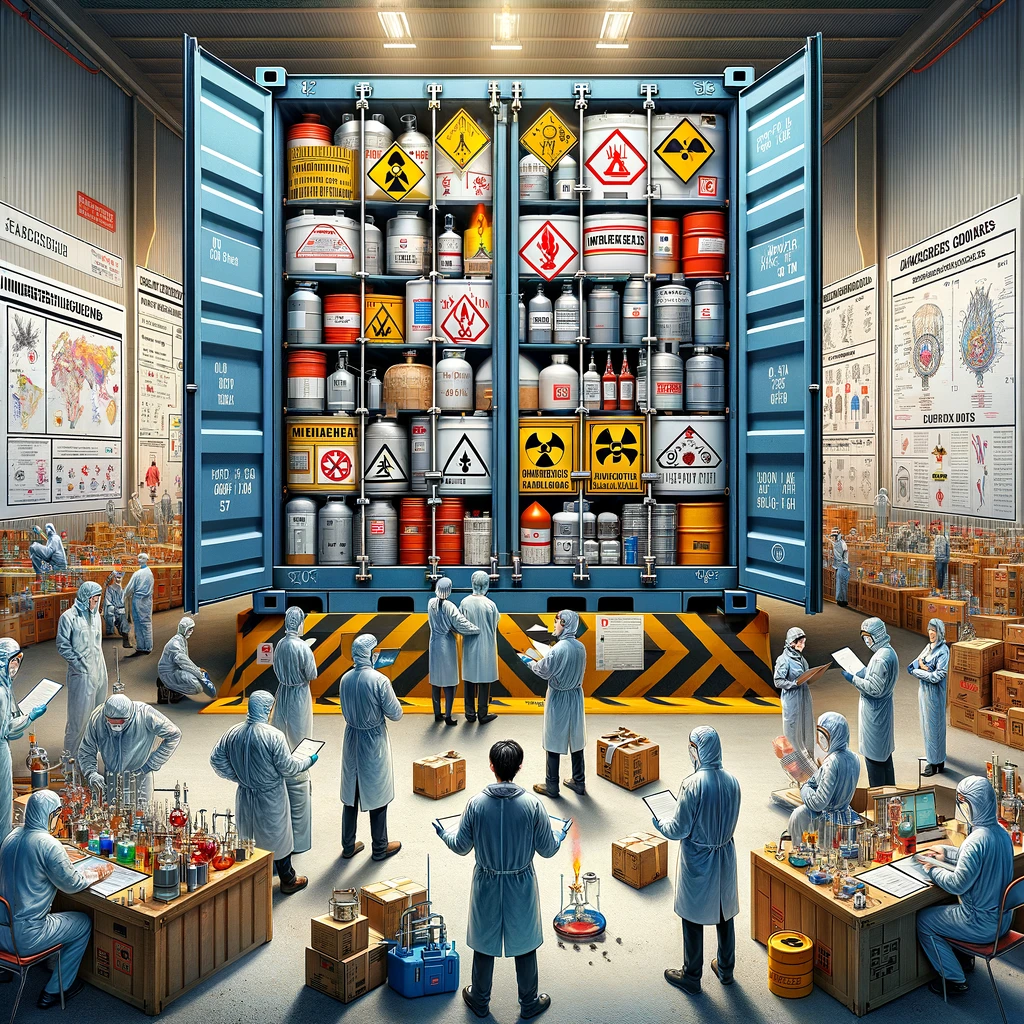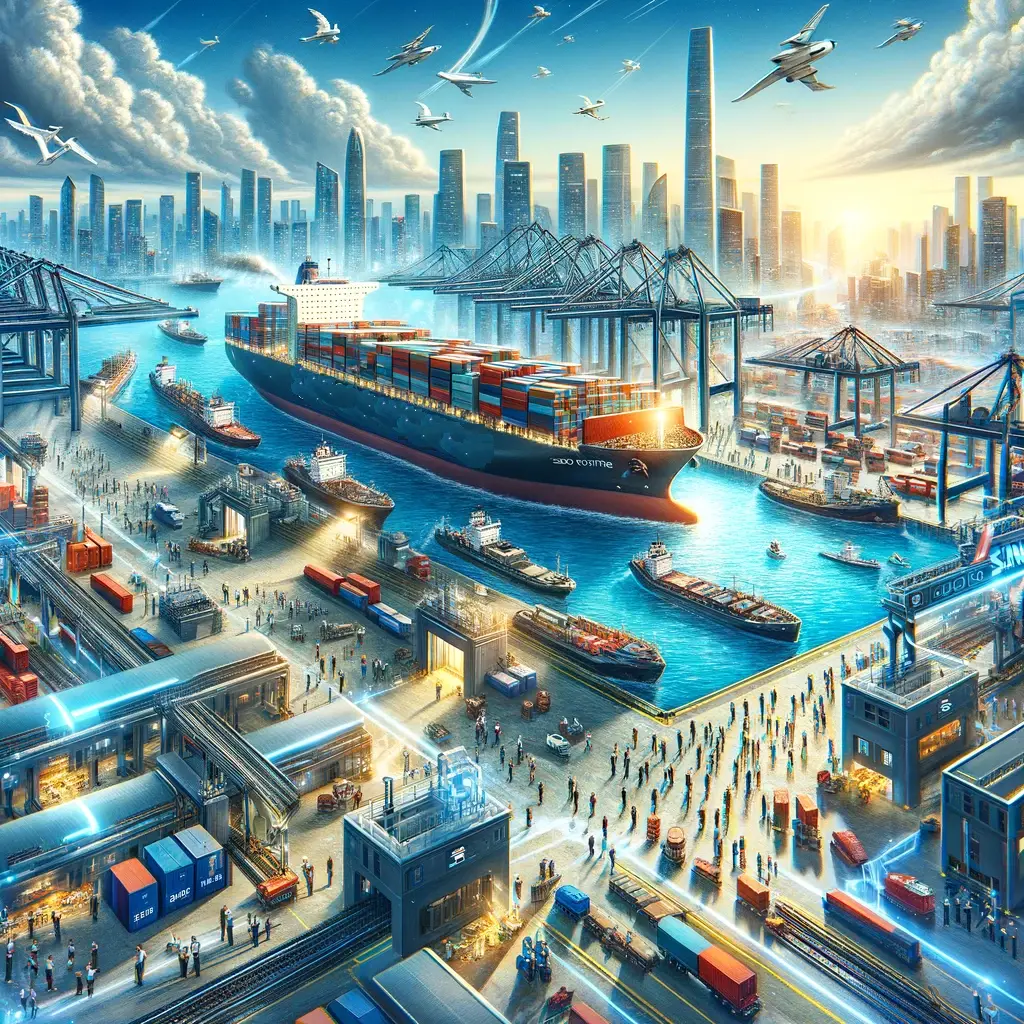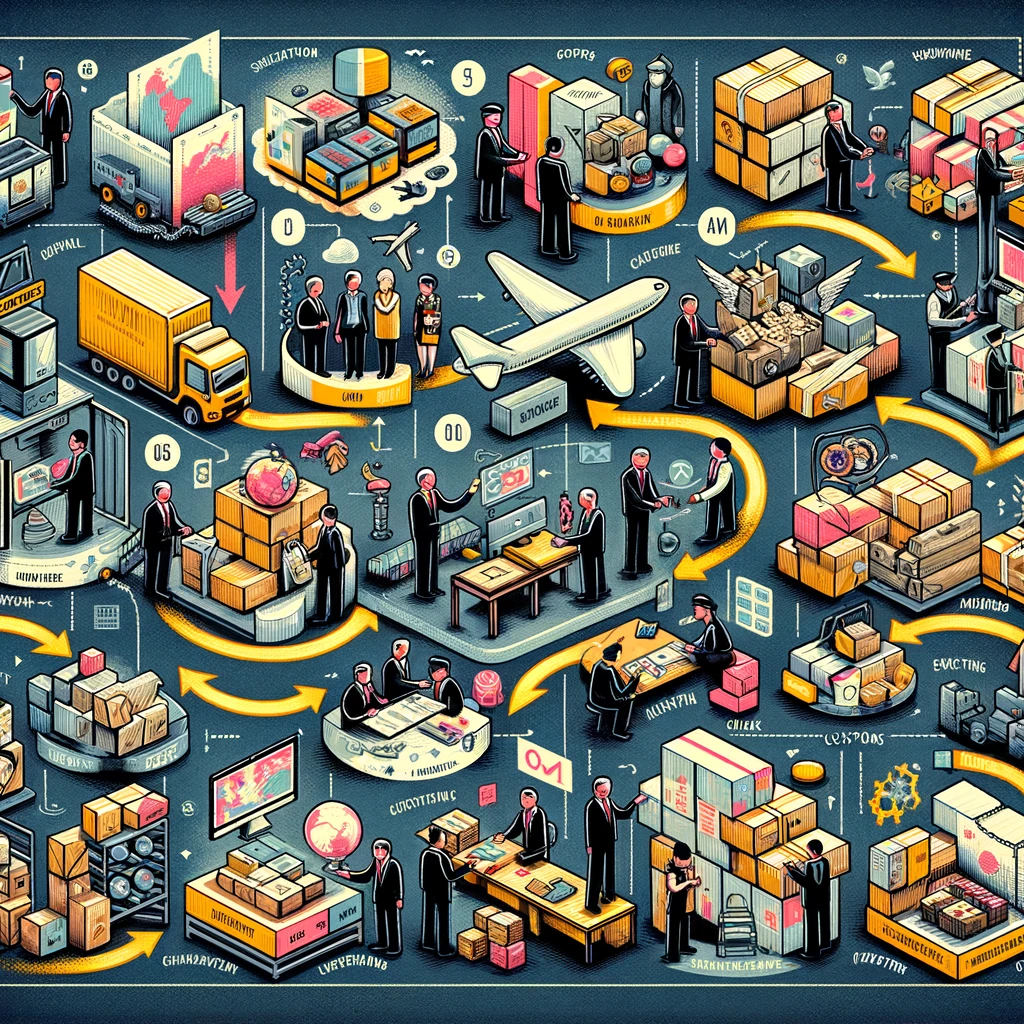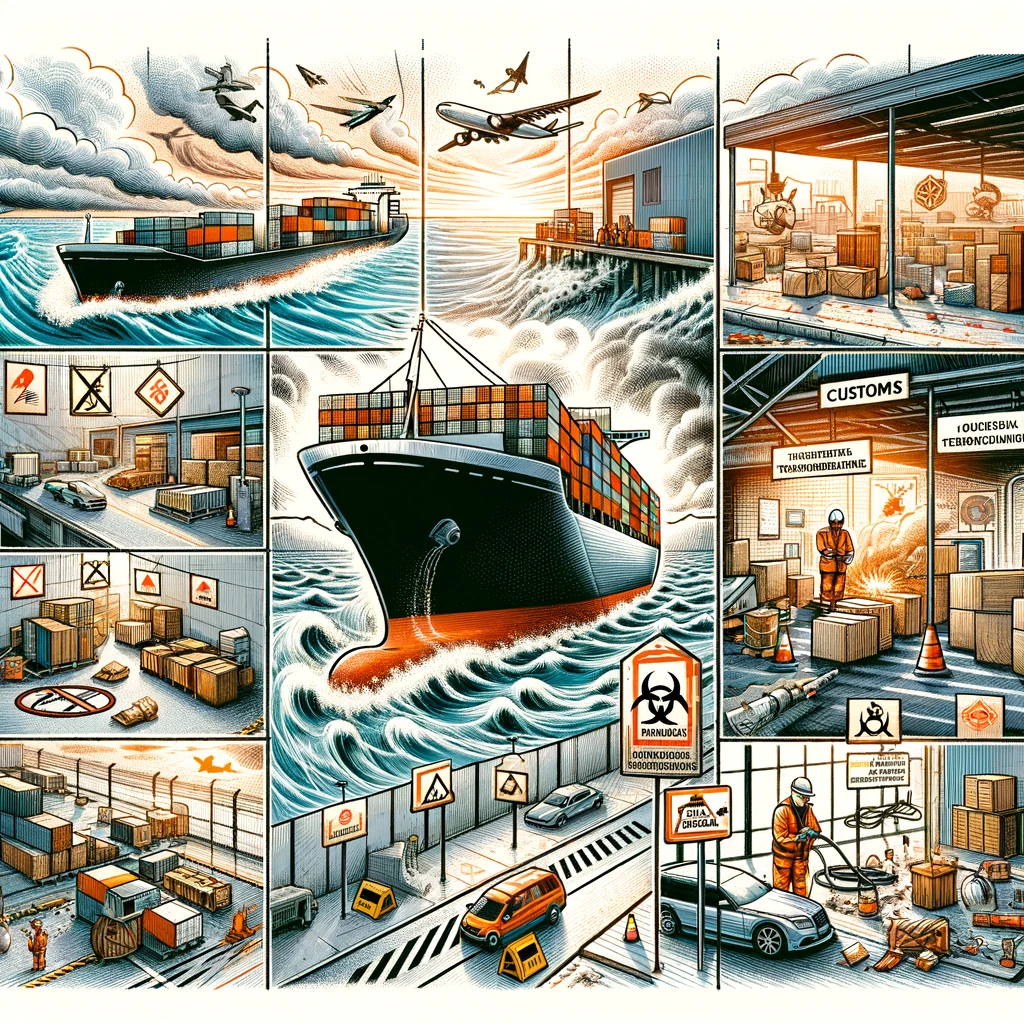Introduction to Dangerous Goods Importing
The world of international trade is vast, intricate, and filled with myriad commodities. But among the vast array of items that traverse our globe, few carry the weight, risk, and importance as dangerous goods. Delving deeper, we’ll explore not only the significance of these items but also the unparalleled role China plays in this market.
Why Dangerous Goods Play a Crucial Role in the Global Economy
Dangerous goods might sound, well, dangerous, and they often are. However, their presence in our global trade system is undeniable. Think about the lithium batteries powering your smartphones or the chemicals aiding in industrial processes. These are all classified as dangerous goods, and their trade is both a necessity and an economic powerhouse. According to a report from the International Air Transport Association (IATA), over 1.5 million shipments of dangerous goods are transported by air every single day! These numbers hint at the tremendous demand and the sheer scale at which these goods impact our daily lives. But where does this all start? Well, a significant portion finds its origin in one of the world’s largest manufacturing hubs: China.
China’s Central Role in the Dangerous Goods Market
When you think about global production powerhouses, China undoubtedly springs to mind. But beyond the electronics, textiles, and myriad other goods, China is a significant player in the dangerous goods sector. This dominance isn’t just due to China’s manufacturing prowess, but also because of its strategic partnerships, infrastructure, and a keen understanding of global market demands.
From chemicals used in agriculture to components in batteries, China’s exports encompass a vast range of dangerous goods. In fact, according to the China Customs Statistics, in just a single year, the country exported goods classified as dangerous worth over $50 billion! This isn’t just about numbers, though. The Chinese government, aware of the intricacies involved, has established rigorous standards and regulations to ensure the safe and compliant export of these goods.
To understand the world of dangerous goods importing, it’s crucial to recognize China’s role. Not just as a manufacturer, but as an innovator and leader in safe, efficient, and compliant trade.
Understanding Dangerous Goods: An In-Depth Overview

Navigating the intricate world of dangerous goods is no walk in the park. The term “dangerous goods” often evokes a sense of trepidation, but it’s not all doom and gloom. With the right knowledge and resources, businesses can navigate this challenging terrain with confidence. Dive deep with us as we demystify classifications, international regulations, and some common pitfalls to watch out for.
Classifying Dangerous Goods: What You Need to Know
Understanding the classification of dangerous goods is the cornerstone of safe and legal importing. In the simplest terms, dangerous goods are items or substances that pose a risk to health, safety, property, or the environment. But how are they categorized? The United Nations (UN) breaks down these goods into nine classes, ranging from explosives to infectious substances. For instance, lithium batteries, commonly used in electronic devices, fall under Class 9: Miscellaneous Dangerous Goods. Recognizing which class a particular good belongs to is crucial, not just for compliance but also to ensure safe handling and transportation.
International Standards and Regulations: Staying Compliant
The world of dangerous goods isn’t just about classifications. It’s governed by a complex web of international standards and regulations. Key among these is the International Air Transport Association (IATA) for air transport and the International Maritime Dangerous Goods (IMDG) Code for sea freight. For businesses, understanding and adhering to these regulations is non-negotiable. Not only do they ensure safety, but they also prevent costly fines and legal repercussions. And remember, regulations might vary depending on the importing country. So always keep a pulse on local standards, especially if you’re importing into regions with stricter regulatory landscapes, like the European Union.
Common Pitfalls in Dangerous Goods Importing and How to Avoid Them
Dangerous goods importing can feel like a minefield, but being aware of the common pitfalls can make all the difference. One significant challenge? Documentation errors. A study by IATA found that a staggering 40% of dangerous goods shipments had some form of paperwork discrepancies. Another common blunder is improper packaging or labeling. Using non-compliant containers or failing to display the right hazard labels can lead to shipment delays or, worse, rejections. The key to navigating these challenges? Education and partnership. Invest in training, stay updated with regulatory changes, and work closely with experienced forwarders who specialize in dangerous goods.
HAI International Holding’s Unparalleled Role

In the dynamic landscape of international trade, few shine as bright as HAI International Holding. As we delve deeper into the world of dangerous goods importing from China, the importance of a knowledgeable and adept partner becomes abundantly clear. And HAI International Holding stands tall in this domain. Let’s unravel the tapestry of expertise, benefits, and tangible success stories that this freight forwarder brings to the table.
Expertise and Skill in Dangerous Goods Importing
In the realm of dangerous goods, every detail counts. HAI International Holding, with its years of hands-on experience, has honed its craft to perfection. Their team is not just well-versed with the nuances of classification and compliance but is also skilled in the intricate logistics involved in transporting these goods. Did you know? HAI International Holding regularly conducts training sessions to ensure its staff is updated with the latest regulations. This commitment to excellence ensures that they’re not just handling goods; they’re ensuring safety, compliance, and efficiency at every step.
The Benefits of Partnering with an Experienced Chinese Freight Forwarder
While expertise is a critical asset, the benefits of partnering with HAI International Holding transcend skill alone. Think about the network they’ve built over the years. With connections to ports, customs authorities, and local experts, they ensure smooth transit for your shipments. And let’s not forget the cost benefits. Leveraging their vast network and understanding of the Chinese market, HAI International Holding can offer competitive rates, ensuring that businesses get value without compromising on safety. But perhaps the most significant advantage? Peace of mind. Knowing that your shipments are in the hands of seasoned professionals means you can focus on what you do best – growing your business.
Success Stories with HAI International Holding: Real-World Case Studies
Numbers and benefits aside, real-world success stories often paint the most compelling picture. Take, for instance, the case of a European electronics manufacturer. They faced recurring issues with lithium battery shipments – a class 9 dangerous good. With HAI International Holding on board, not only did they streamline compliance, but they also reduced shipping times by 20%! Another instance? A US-based cosmetics brand looking to import organic solvents. Leveraging HAI International Holding’s expertise, they not only ensured seamless transit but also benefitted from cost savings due to optimal route planning. These stories aren’t anomalies; they’re testimonials to HAI International Holding’s commitment to excellence.
Step-by-Step Guide to the Importing Process

Delving into the world of imports, especially when handling dangerous goods, can seem daunting. But, with a well-structured approach and a partner like HAI International Holding by your side, the process becomes considerably smoother. Drawing from the vast pool of knowledge and industry insights, here’s a breakdown of the key aspects of the importing process.
Essential Documentation for Successful Importing
The adage “the devil is in the details” could not be truer when it comes to importing. One of the foundational elements for a seamless importing process is ensuring your documentation is spot-on. This includes, but is not limited to:
- Bill of Lading (BOL): The official contract between the shipper and the carrier, providing details about the cargo and its intended handling.
- Commercial Invoice: A document between the buyer and the seller, detailing the transaction specifics.
- Packing List: An itemized list of goods being shipped.
- Dangerous Goods Declaration: Crucial when dealing with hazardous items, outlining the risks associated with the goods.
Remember, each country might have its own specific documentation requirements. Always consult local customs regulations to ensure you’re on the right track.
Packaging and Labeling Standards Unique to Dangerous Goods
Packaging isn’t just about ensuring goods reach their destination intact; it’s about safety, especially for dangerous goods. Standardized under the United Nations recommendations, dangerous goods need to be packed in certified UN packaging. This guarantees the package can withstand shocks, drops, and pressure changes.
Equally vital is labeling. Each dangerous good has a specific label indicating its hazard class, ensuring handlers are aware and can take necessary precautions. For instance, flammable liquids would have a label with a flame, signaling to handlers the nature of the contents.
Moreover, a Material Safety Data Sheet (MSDS) is often required, providing detailed information about the product, its hazards, and safety precautions.
Transportation and Handling: Best Practices and Pro Tips
Transporting dangerous goods demands an extra layer of care and precision. One must select the right mode of transportation, whether air, sea, or land, based on the nature of the goods. Some carriers have restrictions, so always consult with your freight forwarder to avoid last-minute hitches.
Proper storage and separation are key. Dangerous goods often need to be stored away from general cargo to prevent contamination or reactions. Regular inspections ensure the integrity of the goods throughout the journey.
A pro tip? Always ensure open communication with your handlers and forwarders. Regular updates on shipment status and any potential issues help in preempting challenges and ensuring smooth transit.
Challenges and Risks in Dangerous Goods Importing

The world of dangerous goods importing is not for the faint-hearted. It’s a complex maze where challenges lurk around every corner. Whether you’re a seasoned importer or a business exploring international trade, knowing these challenges and risks is imperative. But fear not, for with every challenge, there is a solution, especially with partners like HAI International Holding. Let’s unveil the potential pitfalls and the strategies to navigate them successfully.
Legal and Regulatory Implications You Should Know
The legal landscape for importing dangerous goods is as dynamic as it is intricate. With each country having its own set of regulations, ensuring compliance becomes a herculean task. Here are some implications you should be aware of:
- International Agreements: Agreements such as the Basel Convention or the Rotterdam Convention set the stage for how certain goods can be traded internationally.
- Local Laws: Each nation has its own framework for imports. For instance, certain chemicals banned in Europe might be permissible in other regions.
- Penalties and Liabilities: Non-compliance isn’t just about rejected shipments. It can lead to hefty fines, legal battles, and a tarnished reputation.
The key to navigating this? Staying updated and seeking guidance from experts who are well-versed in international and local regulations.
Ensuring Safe and Compliant Transit for Your Goods
Safety is paramount when it comes to dangerous goods. Here’s what you need to know:
- Storage Requirements: Different goods have different storage needs. For instance, some may require temperature-controlled environments while others demand specific humidity levels.
- Handling Protocols: Ensuring handlers are trained and equipped to manage the goods is essential. This can prevent accidents, which can be detrimental both financially and reputationally.
- Inspection and Certification: Regular inspections and acquiring necessary certifications (like the Dangerous Goods Declaration) can be the difference between smooth transit and a logistical nightmare.
Remember, partnering with a seasoned freight forwarder can significantly reduce the risk of mishandling or non-compliance during transit.
Hidden Costs in Importing and How to Mitigate Them
Money matters. And in the world of imports, unexpected costs can disrupt even the most well-planned budgets. Some of these include:
- Demurrage and Detention Fees: If goods aren’t cleared promptly, these charges can accumulate, often running into thousands of dollars.
- Customs Duties and Taxes: These can vary significantly based on the goods and their destination. Sometimes, the duty on certain goods might be unexpectedly high, adding to costs.
- Insurance: Often overlooked, insuring dangerous goods can sometimes be costlier than standard goods, given the associated risks.
The solution? Always factor in a buffer in your budget for unforeseen costs. Also, having a transparent communication channel with your freight forwarder can help in anticipating and mitigating these expenses.
Additional Tips and Resources

Diving deeper into the realm of dangerous goods importing, one can never have too many resources or tips up their sleeve. Experience is a stern teacher, but with the right knowledge, you can bypass many pitfalls. Partnering with an industry stalwart like HAI International Holding offers not just the logistical support but also the wealth of information accumulated over years. Let’s explore some valuable resources and tips to ensure your importing journey is smooth.
Training and Certification for Dangerous Goods Importing
Knowledge is power. And in the case of dangerous goods importing, it’s also a safety net. Here’s why training and certification matter:
- Understanding Regulations: Courses often provide comprehensive insights into both international and local regulations. This aids in ensuring compliance and avoiding legal complications.
- Safety Protocols: Training equips your team to handle dangerous goods correctly, minimizing the risk of accidents. For instance, knowing how to handle a spill or leak can prevent larger disasters.
- Certification Benefits: Being certified can sometimes lead to discounts or preferential treatment from certain service providers who prioritize working with trained professionals.
To get started, consider organizations like the International Air Transport Association (IATA) or the International Maritime Dangerous Goods (IMDG) which offer specialized courses in this field.
HAI International Holding’s Recommended Partner Network
Collaboration is the key to success. And in the intricate web of international trade, having the right partners can simplify complexities. HAI International Holding, with its expansive experience, has cultivated relationships with some of the best in the industry. Here’s why this network is gold:
- Verified and Vetted: Every partner in HAI International Holding’s network undergoes a rigorous vetting process. This ensures that you’re only working with the best.
- Specialized Expertise: Need someone who understands the nuances of chemical imports? Or perhaps a partner well-versed in electronics? The network boasts specialists for almost every niche.
- Cost-Efficiencies: Leveraging relationships, HAI International Holding often secures better deals for its clients, ensuring you get premium services without the hefty price tag.
For a detailed list or specific recommendations tailored to your needs, reaching out to HAI International Holding directly would be your best bet.
Conclusion: Demystifying Dangerous Goods Importing from China
Navigating the maze of dangerous goods importing can be daunting, especially when China — a behemoth in global trade — is in the picture. Yet, with the right knowledge, tools, and partners, it’s entirely possible to master this domain. By being proactive, educating oneself, and tapping into the expertise of seasoned players like HAI International Holding, the perceived hurdles can be transformed into stepping stones. Remember, every challenge in the importing world presents an opportunity — one that can lead to growth, innovation, and profit.
FAQs – The Most Common Queries Addressed
The complex world of importing inherently gives rise to questions. Here are some of the most frequently asked ones, answered in a concise manner.
How do I choose the right mode of transportation for these goods?
Choosing the right mode depends on the nature of the good, its classification, and destination. For instance, certain volatile chemicals might be safer on sea freight than air. Consulting with an experienced freight forwarder, like HAI International Holding, can provide insights based on the specific requirements and potential risks associated with your cargo.
Can all dangerous goods be imported from China?
Not all. While China is a major exporter, certain goods might be restricted or banned due to international treaties, Chinese regulations, or the regulations of the importing country. It's crucial to do thorough research or consult with experts before initiating the import process.
How does HAI International Holding ensure safety during transit?
HAI International Holding prioritizes safety above all. They employ trained professionals who understand the nuances of handling dangerous goods. From using specialized packaging to ensuring the correct labeling, every step is meticulously planned. Additionally, they have partnerships with carriers who have a proven track record in transporting hazardous materials safely.
How can I ensure my import is compliant with international regulations?
Ensuring compliance is a multi-step process. First, familiarize yourself with the International Air Transport Association (IATA) and International Maritime Dangerous Goods (IMDG) regulations. Next, ensure your goods are properly classified, packed, and labeled. Also, consider engaging a customs broker or working with a freight forwarder like HAI International Holding that offers compliance services to guide you through the complexities.












